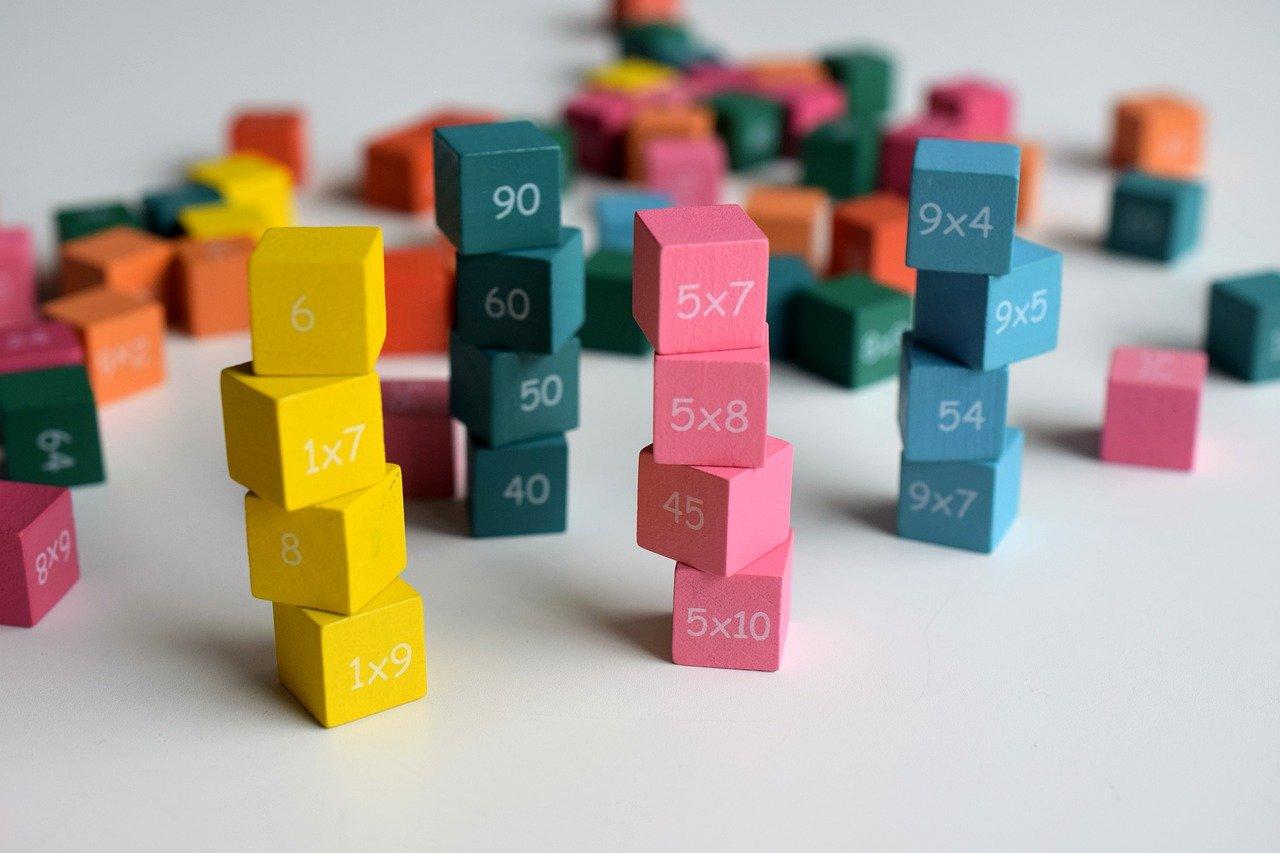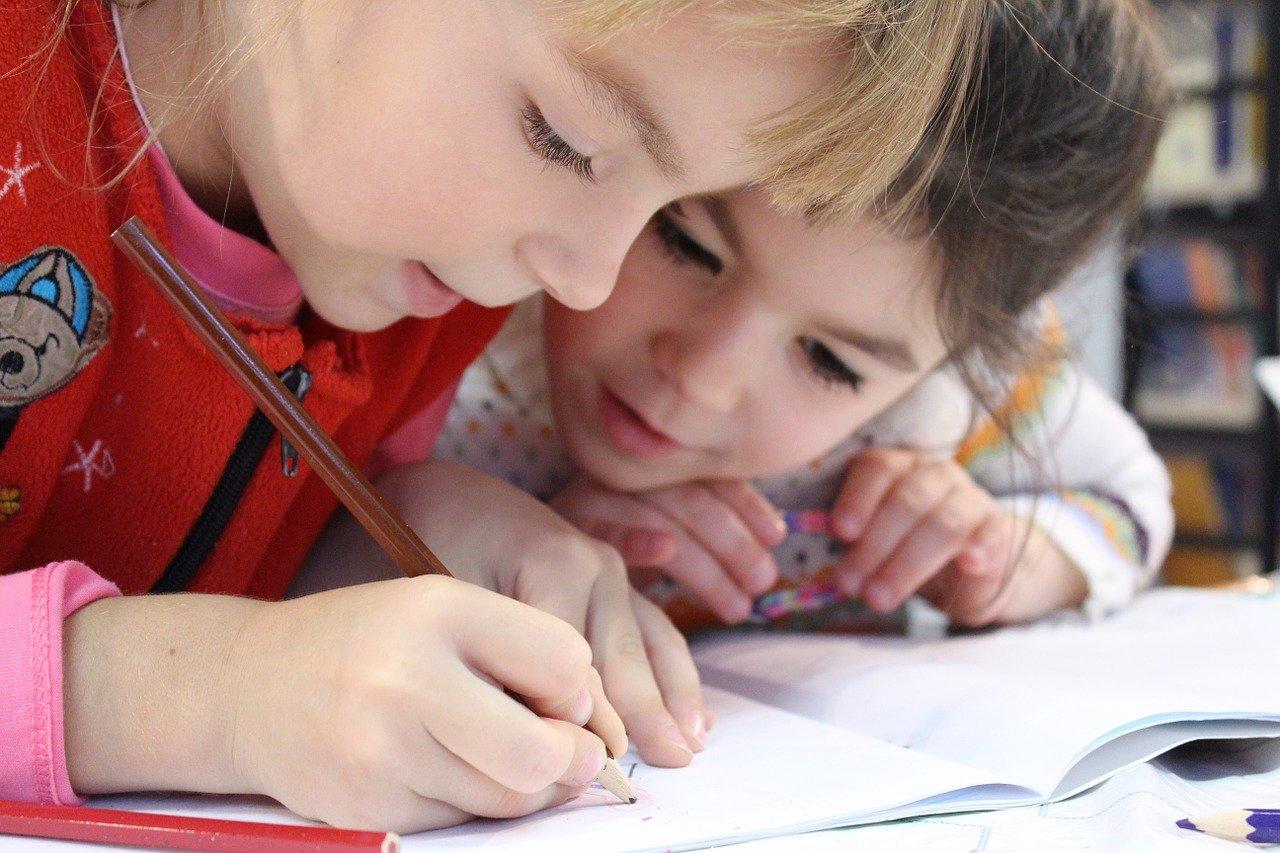When parents put their child on the big yellow bus for the first time it can really be an emotional moment.
They know they are off to school for the first time when they reach kindergarten and they are off to learn on their own for the very first time.
Their time as a baby is effectively over and now they have (small) responsibilities in regards to their academics as well as making friends.
Teachers have the responsibility to teach these students the basics from teaching them the alphabet to how to spell their name and more concepts.
Then of course early on students begin to learn that very tricky subject, math.
Elementary school mathematics may seem very easy nowadays when you are in your adult years, however when you think back, many of us adults had trouble with math back in elementary school.
Many young children don't have as much confidence with math as they do with other subjects, math eventually becomes quite tricky as the different topics appear that require more thinking and studying.
Even early on some students can have difficulty with the more simple topics and concepts.
Math certainly isn't the easiest subject in school and probably many will say it isn't the most fun either.
However, a good educator whether a teacher or private tutor should be able to motivate students to get them to learn elementary school math in a fun and interesting way.
There are plenty of ways to motivate children, preparing lessons for your students will be important when it comes time to teach them and motivate them to learn mathematics.
If you are planning to tutor math then having a complete understanding of these should be a piece of cake! math tutor near me.
What may not be so simple is how exactly you teach these topics, as it can be difficult for students to comprehend these topics at a young age, then of course there is the problem of them becoming bored or frustrated.
So you need to prepare and have a good idea of how to teach students these different topics as well as a way to keep them motivated to keep learning and improving their mathematical skills.

What Are Elementary Math Topics

Nowadays elementary math topics could be quite different in some ways from what was taught ten or twenty years ago in school.
However, the basic stuff is more or less the same.
You have the typical topics:
- Addition
- Subtraction
- Multiplication
- Division
Younger students in kindergarten and first grade need to learn the really basic stuff like counting and counting money and other very easy mathematical concepts.
The students who are in fourth, fifth, and sixth grades need to learn more advanced topics, like fractions and decimals.
If you are planning to tutor math then having a complete understanding of these should be a piece of cake! math tutor near me.
What may not be so simple is how exactly you teach these topics, as it can be difficult for students to comprehend these topics at a young age, then of course there is the problem of them becoming bored or frustrated.
So you need to prepare and have a good idea of how to teach students these different topics as well as a way to keep them motivated to keep learning and improving their mathematical skills.
Ways to teach Elementary Math Topics
Children in general, are really excited about learning and love to do a good job, math is one of the more frustrating subjects so if students can get the concepts of the different math topics pretty quickly they'll become more and more excited about math. To supplement classroom lessons, parents are also encouraged to involve their children in interactive activities at home. For instance, they can play math learning games for kindergarten on educational websites or apps which make learning more fun and engaging.
With that attitude, they can really give it their all in math when they eventually get to middle school, high school, and then college.
People who have studied majors in the field of mathematics tend to have really good chances of finding a job, a really good job, and pretty quickly.
So it will be important for elementary school students to get the hang of math early on and give them a chance to fall in love with the subject as much as possible.
The best way for that to happen is to have a good teacher and even a good private tutor to teach them the different mathematical topics they are going to learn in school.
Addition
The first math topic students will learn after they have learned how to count is addition. If you are going to teach children addition you will use their background information on counting to make it happen.
For teaching addition, the best ways will be to start by:
- Reviewing how to count
- Start using visuals
- Work with a number line
- Start counting up
- Use tens
It takes time for children to fully get the hang of it but there are plenty of ways to teach these methods in a fun and interesting way using games and other activities.
Once you start to revise how to count, using visuals apart from just using fingers and toes will be a huge help, then present numbers on a number line, and then once they get the hang of it they can start to use tricks like pointing out how far a number is away from the number 10.
For example, if 12 is 2 away from 10 you need to add 2 more to one of the numbers in your math problem.
Subtraction
Then comes learning subtraction after addition. Around second grade is when students really start to learn the topic.
Subtraction actually can be easier for students to learn than addition, as you can use the knowledge from addition to teaching subtraction.
If 9 + 4 = 13, then shouldn't 13 - 4 = 9?
Of course, as with any child, visuals work great when you are trying to hammer home a concept.
Make sure you use charts and tables to show how subtraction works and students can understand the topic even faster.
Multiplication
Multiplication can be a really big jump from addition and subtraction. Around third or fourth grade is when students start to learn multiplication.
First things first if you want to teach multiplication, visuals once again will be your friend.
You can use bottle caps, checkers, whatever you need to put things into three groups of four, for example, that shows three times four. In that way, students can begin to learn multiplication very quickly.
Then start to teach skip counting, skip counting is a way that shows how multiplication can be a fast way to count numbers. For example:
4 plus 4 equals 8 so 2 fours is eight, and so four times two equals eight.
Little by little students will begin to understand the concept, especially once you highlight more and more how grouped numbers add up to a solution.
Division
Teaching division to an elementary school student is another elementary math topic that can be a bit difficult to explain at times, but once a student gets the hang of it they'll be off and running.
Use visuals to show and real-life topics to show students how to divide.
For example, if there are eight cookies and four children how many cookies does each child get.
The answer is obviously two, in that way visuals and real-life scenarios play a huge role in teaching division.
Dividing by two and five at the beginning of the learning process also makes it easy for students to grasp the topic.
Motivating children to study math

Convincing young elementary school students to fall in love with math isn't that easy of a task, however, it isn't impossible to motivate them to do the best they can and keep improving. So what are some ways that children can become motivated by math?
Find a private math tutor
Having your children or students work with a private tutor is a fantastic way to get them motivated to study math. That is because of a few different reasons. You might even consider hiring a math tutor near me for more personalized help.
Tutors are great because they can work really closely with students who need that special attention if they are struggling with math as well as make math fun.
Tutors usually will have a whole arsenal of games and fun activities to keep students interested in studying math with them.
Probably the best platform in the United States for finding one of these tutors as Superprof.
How is Superprof special?
- Experienced math tutors
- Online and in-person classes
- Many different tutors to choose from
Different math games and camps
There are plenty of games and projects that students can learn while having fun. Any teacher who is really motivated to teach their students math will use these ideas to help students stay motivated.
Don't forget about math camps that will connect students with math teachers and older students that can teach them math in a fun way.















